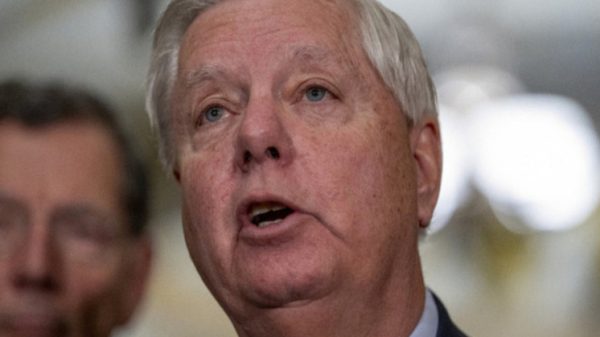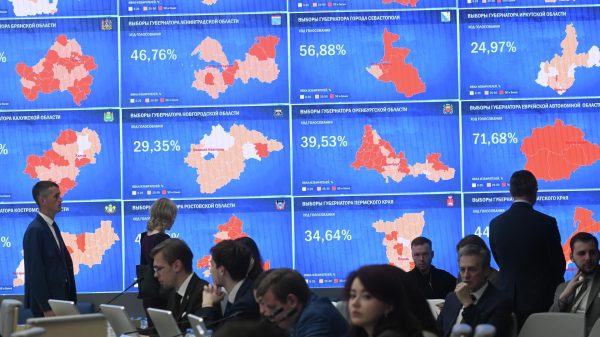While some market participants are talking about a yuan shortage in the Russian Federation, trading on the Moscow Exchange (MOEX: MOEX) is proceeding in a fairly calm mode. Volumes in the first days of August even exceeded the figures for the first days of July, although they are slightly lower than the figures for the previous months of 2024. The lag is still due to low demand for currency from importers. High rates for attracting yuan are most likely caused by liquidity problems of one or two large market participants.
The shortage of yuan liquidity has a limited impact on the spot currency market. According to Kommersant's estimate, based on data from market participants, on Thursday, August 8, the total volume of yuan trading on the Moscow Exchange in «tomorrow» mode amounted to almost 85 billion rubles, which coincides with the average value of trading since the beginning of the month. Despite the fact that the day before the trading volume dropped to 50 billion rubles, in the previous two days it confidently exceeded 100 billion rubles. In general, the indicators for the first days of August significantly (by 16%) exceed the indicators for the first days of July, although they are lower than the average indicators for previous months.
Market participants speak about the problem with yuan liquidity, citing data on transactions with the Bank of Russia.
In particular, on August 7, the volume of swap transactions amounted to CNY 21.26 billion (equivalent to RUB 252 billion), and the rate reached 17% per annum. Since the beginning of August, the volume of such transactions with the regulator has reached CNY 106.32 billion (RUB 1.26 trillion), which is only slightly less than the figure for the whole of July — CNY 135.8 billion (RUB 1.6 trillion).
However, these record figures do not indicate a shortage of yuan in the economy, analysts say. “Russia maintains a trade surplus with China, so yuan are flowing in, hence the yuan/ruble exchange rate is stable — both on the stock exchange and in the over-the-counter market,” notes Sovcombank chief analyst Mikhail Vasiliev. In particular, since the beginning of the month, the Chinese currency exchange rate has remained in a rather narrow range of 11.75–11.9 rubles/CNY.
In addition, such episodes of soaring yuan rates are repeated regularly. For example, at the end of 2023 — beginning of 2024, rates rose to 5-10% per annum, and the volume of swap transactions with the Bank of Russia reached CNY 5-14 billion (see Kommersant on February 7). Deputy Chairman of the Board, Head of the Treasury of SDM Bank Eduard Lushin does not rule out the possibility that a shortage of yuan was caused by some major market participant.
However, for the currency market, the relationship between supply and demand on the part of participants in foreign economic activity is of greater importance.
At the same time, importers have reduced their interest in the currency due to sanctions against the Moscow Exchange and problems with cross-border transactions, which has become one of the key reasons for the strengthening of the ruble since mid-June. However, in response to the excessive strengthening of the Russian currency, the government has softened the requirement for mandatory repatriation of foreign exchange earnings (see Kommersant of June 22). If in October key participants in foreign trade were forced to transfer 80% of their foreign exchange earnings to Russian bank accounts and sell 90% of them, then in June the repatriation rate was reduced to 60%, and in July — to 40%. “During the tax payment period in July 2024, exchange trading volumes in the yuan were relatively small, which may indirectly indicate a decrease in the supply of currency from exporters,” notes Denis Popov, chief analyst at PSB.
Unlike dollars and euros (which could be freely borrowed in the Western financial system), Russian companies receive yuan mainly from trade, Mr. Vasiliev points out. At the same time, Chinese banks could reduce the supply of yuan, including within the framework of swap transactions. It is difficult to attract large volumes from other market participants, which forced some players to turn to the Central Bank. According to Denis Popov, the organization of sanctions-resistant transaction channels between Russia and China would help resolve the problem. But this is a non-trivial task that requires the creation of a special financial infrastructure. Despite this, bankers expect an improvement in the liquidity situation on the spot market. Even in the context of relaxed requirements for the repatriation of foreign exchange earnings, according to Evgeny Koshelev, Director of the Market Research and Strategy Office at Rosbank, companies still need to bring it to the Russian Federation, otherwise they will have to fund themselves in rubles for operational purposes at the current high rates.






















































Свежие комментарии